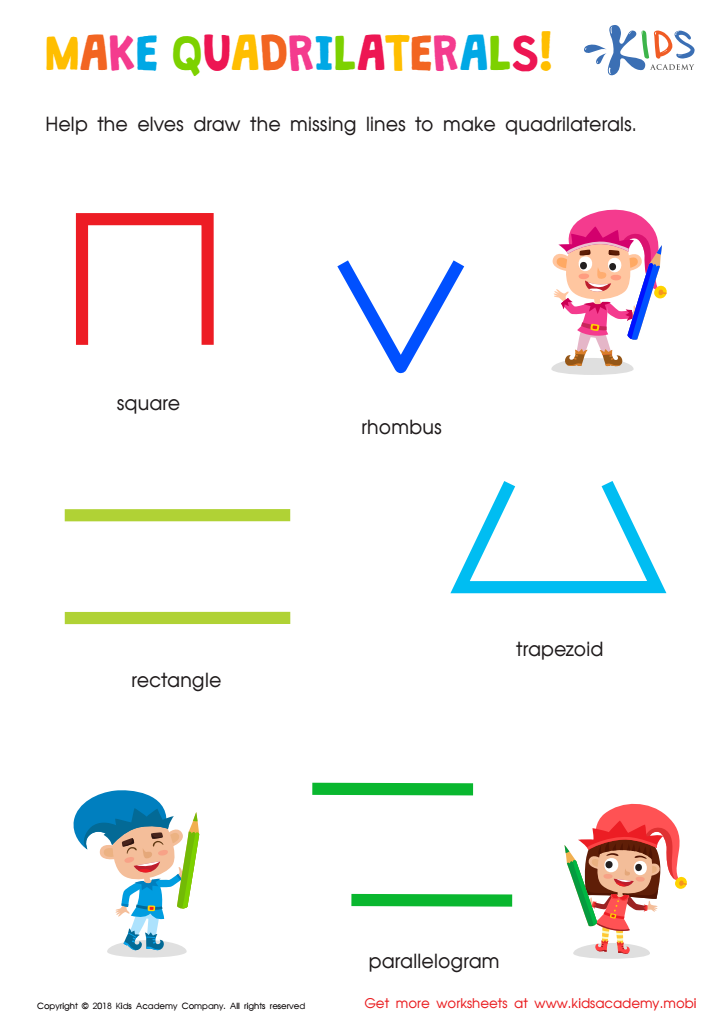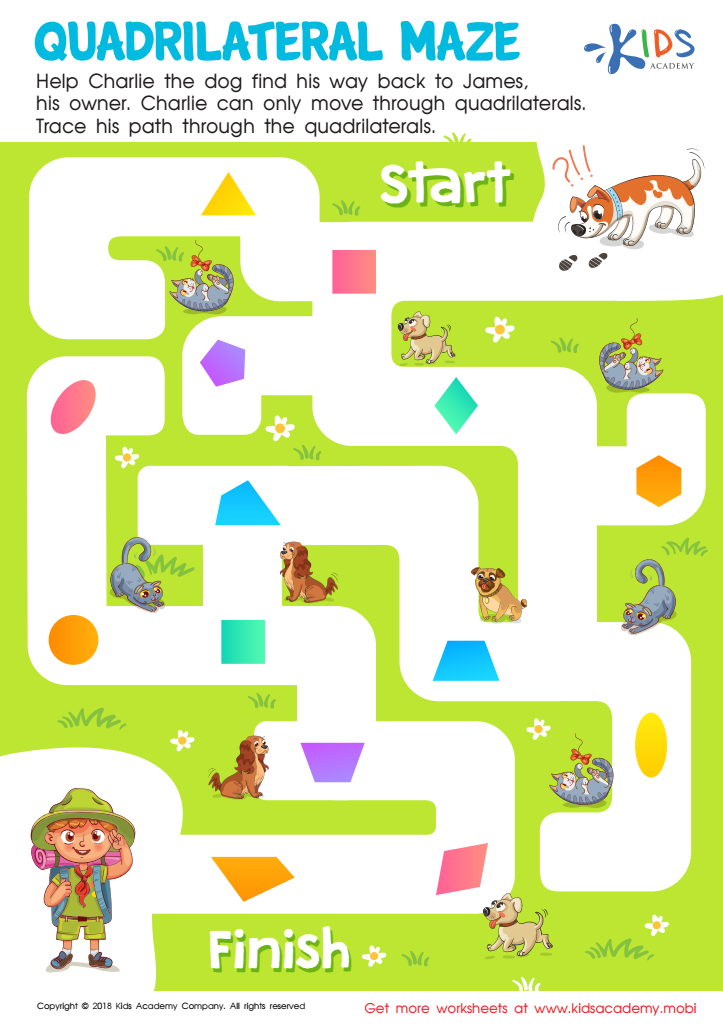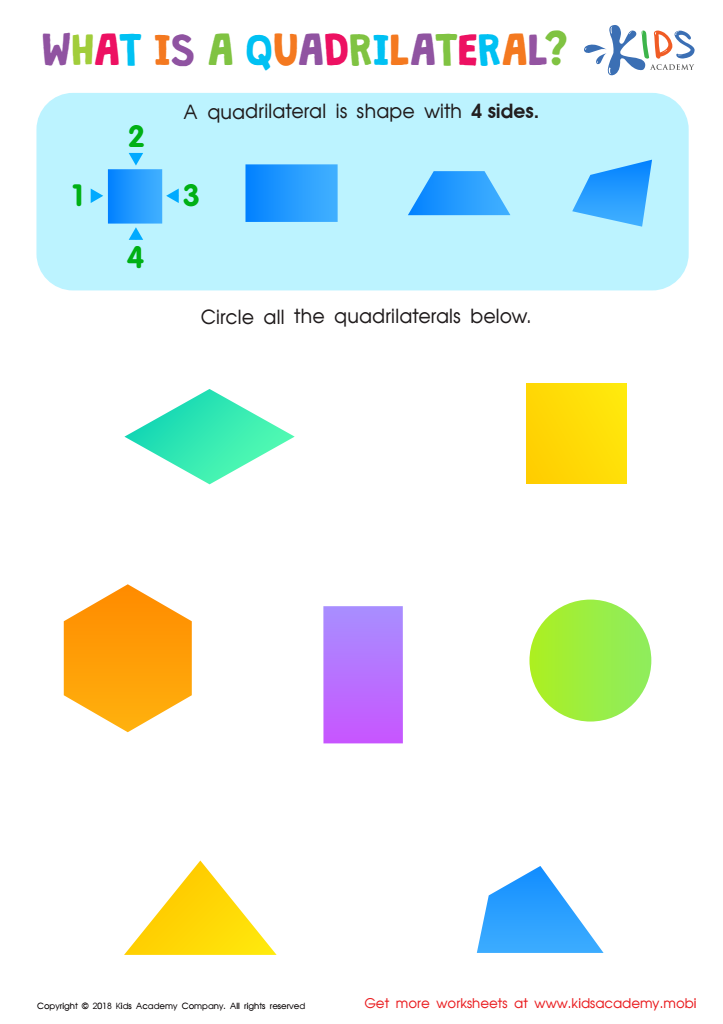Understanding quadrilaterals Geometry Worksheets for Ages 8-9
4 filtered results
-
From - To
Unlock the world of geometry with our "Understanding Quadrilaterals Geometry Worksheets for Ages 8-9." Perfectly designed for young learners, this collection helps children grasp the fundamental properties of four-sided shapes. Through engaging activities and diagrams, kids will explore different types of quadrilaterals such as squares, rectangles, parallelograms, and more. These worksheets promote critical thinking and problem-solving skills, making math fun and accessible. Ideal for classroom use or at-home practice, our resources ensure a solid foundation in geometry that paves the way for future success. Foster your child's love for learning today with these comprehensive, age-appropriate worksheets!


Make Quadrilaterals Worksheet


Identify Quadrilaterals Worksheet


Quadrilateral Maze Worksheet


What Is a Quadrilateral? Worksheet
Understanding quadrilaterals is important for children aged 8-9 because it lays a strong foundation for their future mathematical learning and improves their critical thinking skills. At this age, kids are already familiar with basic shapes, but delving into quadrilaterals helps them understand the properties and relationships between different types of shapes. This knowledge enhances their spatial awareness and geometric reasoning, skills that are crucial in fields like engineering, architecture, and even everyday problem-solving.
Learning about quadrilaterals can also foster a sense of curiosity and enjoyment of mathematics. Lessons often involve hands-on activities like drawing, cutting, and constructing shapes, which makes the learning process engaging and memorable. This formative experience can develop a positive attitude toward math, encouraging a lifelong interest in the subject.
Moreover, understanding quadrilaterals improves logic and analytical thinking. Children learn to classify shapes based on their sides and angles, enhancing their ability to identify patterns and make reasoned conclusions. This is not only vital for math but beneficial in other areas of learning and life in general.
Overall, investing time in understanding quadrilaterals helps children grasp fundamental concepts, boosts their confidence in tackling more complex math topics later on, and cultivates essential skills that will serve them well throughout their educational journey and beyond.
 Assign to My Students
Assign to My Students




















